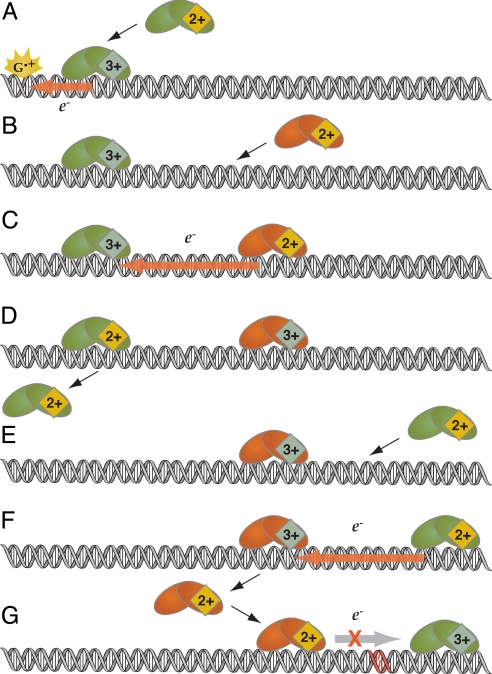Fig. 1.
A model for DNA-mediated CT in DNA repair. In this model, DNA repair proteins containing [4Fe4S]2+ clusters—for example, EndoIII (green) and MutY (orange)—bind DNA, activating them toward oxidation to the [4Fe4S]3+ state. The sequence of events is as follows: Guanine radical formation can oxidize a repair protein in a DNA-mediated reaction, stabilizing the oxidized protein bound to DNA (A). A second protein binds near the first protein (B and E). CT to a distally bound protein can occur if the intervening DNA is undamaged (C and F). The newly reduced protein has a diminished affinity for DNA and diffuses away (D). If a lesion site is present between the proteins (G), the DNA-mediated CT step is inhibited, and the oxidized protein remains bound. The sum of the DNA-mediated CT steps between proteins constitutes a full search of the genome.

